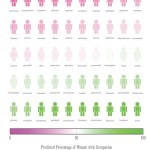By MARTIN CRUTSINGER, AP Economics Writer
WASHINGTON (AP) _ After a bleak start to the year, the U.S. economy grew at a brisk annual rate of 4.2 percent in the April-June quarter, the government said Thursday, slightly faster than it had first estimated.
The upward revision supported expectations that the second half of 2014 will prove far stronger than the first half.
The Commerce Department’s second estimate of growth for last quarter followed its initial estimate of 4 percent. The upward revision reflected stronger business investment than first thought.
The seasonally adjusted 4.2 percent annual growth rate for the gross domestic product _ the nation’s total output of goods and services _ came after the economy had shrunk at a 2.1 percent annual rate in the January-March quarter. That was the economy’s biggest drop since the depths of the Great Recession, and it reflected mainly the effects of a harsh winter that kept consumers away from shopping malls and disrupted factory production.
Many economists say they expect growth of around 3 percent in the current July-September quarter and for the rest of the year.
During a White House news conference Thursday, President Barack Obama took note of the upward revision to growth.
“There are reasons to feel good about the direction we are headed,” Obama said.
“Companies are investing, consumers are spending,” he said.
Still, he acknowledged that “there is a lot more that we should be doing to make sure that all Americans benefit from the progress that we have made.”
Obama said he would press Congress when it returns next week to take further actions to boost the economy.
The government’s upwardly revised estimate of business investment last quarter showed capital spending growing at an annual rate of 8.4 percent last quarter. That was sharply higher than the government’s initial 5.5 percent estimate.
Ian Shepherdson, chief economist at Pantheon Macroeconomics, said the strength in business investment has likely extended into the current quarter, lending support to the economy.
In its second estimate of growth for last quarter, the government said companies’ restocking of supplies contributed less than it had first estimated. But a higher trade deficit subtracted less from growth than initially estimated.
The downward revision in inventory building will likely help boost growth in the current quarter because it means that businesses may need to restock their supplies to meet demand.
With the wild swing between the first quarter’s sharp slump and the vigorous rebound last quarter, annual economic growth has averaged a meager 1.1 percent for the first six months of this year.
Because of the rocky start, economists think growth for all of 2014 will average just 2.1 percent, little changed from last year’s 2.2 percent increase.
They’re more optimistic about 2015. Many expect growth to accelerate to 3 percent, an indication that the economy is finally gaining cruising speed after the deep 2007-2009 recession, the worst since the 1930s. The recession officially ended in June 2009 and over the past five years, the economy has turned in subpar growth rates averaging around 2 percent a year.
“I am looking for 2015 to be a better year, assuming geopolitics don’t get in the way,” said Sung Won Sohn, an economics professor at California State University, Channel Islands. Economists worry that any of several political hotspots, from Ukraine to Israel to Iraq, could erupt in a way that would destabilize U.S. and global growth.
But Sohn said numerous factors should support growth in the second half of this year and in 2015. The principal strength is expected to come from further improvement in the job market.
In July, employers added 209,000 jobs, the sixth straight month of solid 200,000-plus job growth. Those gains have averaged 244,000 a month since February, the best six-month string in eight years.
Economists also foresee the unemployment rate, now a nearly normal 6.2 percent, going even lower. An improving job market means rising household incomes, higher consumer confidence and more consumer spending. That is critical to growth because consumer spending accounts for more than two-thirds of economic growth.
Besides more jobs translating into more spending power, economists think other forces, such as business investment, stronger state and local finances and rising exports, will also support growth in coming months.










